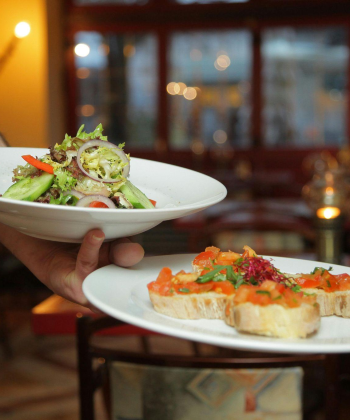Discover the enchanting world of Japanese cuisine – from traditional breakfasts packed with nutrients to iconic dinner dishes like Sukiyaki and Tempura.
We’ll take you on a mouthwatering journey through Japan’s rich culinary traditions. Explore the artistry in every dish, delve into regional specialties, savor street food delights, and indulge in unique Japanese desserts.
Plus, learn how to perfectly pair these delectable dishes with sake for an unforgettable dining experience.
The Art of Japanese Cuisine
The art of Japanese cuisine is much more than just food preparation; it’s a deeply rooted tradition that blends aesthetics, culture, and flavor in each meticulously crafted dish.
It’s an art form where food presentation is as important as its taste. You’ll notice how each ingredient is thoughtfully chosen, not just for its flavor but also for its color, texture, and the way it complements the other elements on the plate.
Even the dishes and utensils used are part of the overall culinary experience. They are selected to enhance not only the food’s visual appeal but also how it’s perceived by your other senses.
This commitment to detail and harmony is what makes Japanese cuisine a true art form. You’re not just eating a meal; you’re experiencing a piece of Japanese culture.
Traditional Japanese Breakfast Foods
The traditional breakfast foods offer an authentic taste of Japan’s culinary heritage. These meals, packed with nutrients and flavors, help start the day on a healthy note. Let’s explore some of these breakfast staples:
Rice and Miso Soup
- Gohan: This is steamed rice, and it’s the foundation of the meal.
- Miso Soup: A soup made from fermented soybean paste, often with added tofu or vegetables.
Grilled Fish and Pickled Vegetables
- Yakizakana: A small piece of grilled fish, commonly salmon or mackerel.
- Tsukemono: These are pickled vegetables, which add a refreshing crunch to the meal.
As you taste and learn about Japan’s traditional breakfast meals, you’ll find a delightful balance of textures and flavors.
Lunch Delights: Bento and Beyond
This portable meal, traditionally packed in a box, is a convenient yet satisfying choice. A Bento box usually contains rice, fish, or meat, and pickled or cooked vegetables. But don’t be fooled by its simplicity, as each Bento reflects the care and artistry of Japanese cuisine.
Aside from Bento, you’ll find dishes like ramen, a rich, hearty noodle soup, and tempura, a selection of lightly battered, deep-fried seafood and vegetables.
Sushi too is a popular lunch option, offering a variety of tastes with its combination of vinegared rice, fish, and other ingredients.
Famous Japanese Dinner Dishes
As the evening draws in, Japan’s culinary scene comes alive with a variety of dishes. Each is a testament to the country’s rich food culture, bound to tantalize your taste buds. Let’s explore two iconic dinner dishes:
Sukiyaki
This hot pot dish is a treat for meat lovers. Thinly sliced beef, simmered in a sweet soy sauce broth with vegetables and tofu, it’s a hearty, warming dish for a chilly night.
Tempura
Lightly battered and deep-fried seafood or vegetables. Crispy on the outside, tender within – it’s a texture lover’s dream.
Decoding Sushi: A Beginner’s Guide
Sushi isn’t just raw fish, it’s a combination of vinegared rice paired with various ingredients, including fish, vegetables, and even tropical fruits.
Nigiri, a hand-formed ball of rice topped with a slice of fish, and Maki, rice and fillings rolled in seaweed, are two popular types.
Sashimi, often confused with sushi, is purely raw fish or seafood.
When eating sushi, remember that the rice, not the topping, is the star. Use soya sauce sparingly, and enjoy your wasabi and pickled ginger as palate cleansers.
Regional Specialties: From Hokkaido to Okinawa
Each region in Japan boasts unique flavors and culinary traditions, promising an unforgettable journey for your palate.
Hokkaido is known for its dairy products and fresh seafood, especially its decadent sea urchin and king crab.
- Must-try dish: Miso ramen with butter and corn.
Okinawa is famous for its longevity-promoting diet, including the bitter melon dish, Goya Champuru, and pork belly.
- Must-try dish: Okinawan Soba, not your typical soba but a hearty noodle soup.
Street Food Culture in Japan
Japan’s vibrant street food culture is an unbeatable way to taste traditional dishes that are as diverse as they are delicious. Every corner offers a new culinary experience.
From sizzling yakitori skewers grilled right before your eyes to piping hot takoyaki, octopus-filled dough balls that are a crowd favorite.
You can’t miss the okonomiyaki, a savory pancake loaded with various ingredients like cabbage, pork, and seafood.
Street stalls, known as yatai, often serve ramen, a food staple in Japan. You’ll find these stalls bustling with activity as locals and tourists alike huddle around for a quick, satisfying meal.
Japan’s Unique Desserts and Sweets
Japan’s unique assortment of desserts and sweets offers a delightful twist on traditional flavors. The Japanese take great pride in their desserts, integrating seasonal ingredients and cultural significance into the crafting process.
- Mochi: This sweet, sticky rice cake is a beloved treat throughout Japan.
- Daifuku: A type of mochi filled with sweet fillings like red bean paste.
- Sakura Mochi: Wrapped in a cherry blossom leaf, this mochi celebrates spring.
- Matcha-flavored sweets: Matcha, or powdered green tea, lends its distinct flavor to a variety of sweets.
- Matcha Ice Cream: A refreshing treat with a rich, earthy taste.
- Matcha Kit Kat: A unique twist on the classic candy bar.
Pairing Japanese Dishes With Sake
To elevate your experience of Japan’s culinary wonders, knowing how to pair various dishes with sake is key. Sake, a traditional Japanese rice wine, comes in different types, each with its unique flavor profile.
If you’re indulging in a hearty dish like Sukiyaki or Shabu-Shabu, a robust Junmai sake can stand up to the strong, savory flavors.
Lighter fare, like sushi or sashimi, pairs beautifully with a delicate Ginjo sake.
Want to enjoy tempura? Try it with a crisp, dry sake to cut through the richness.


